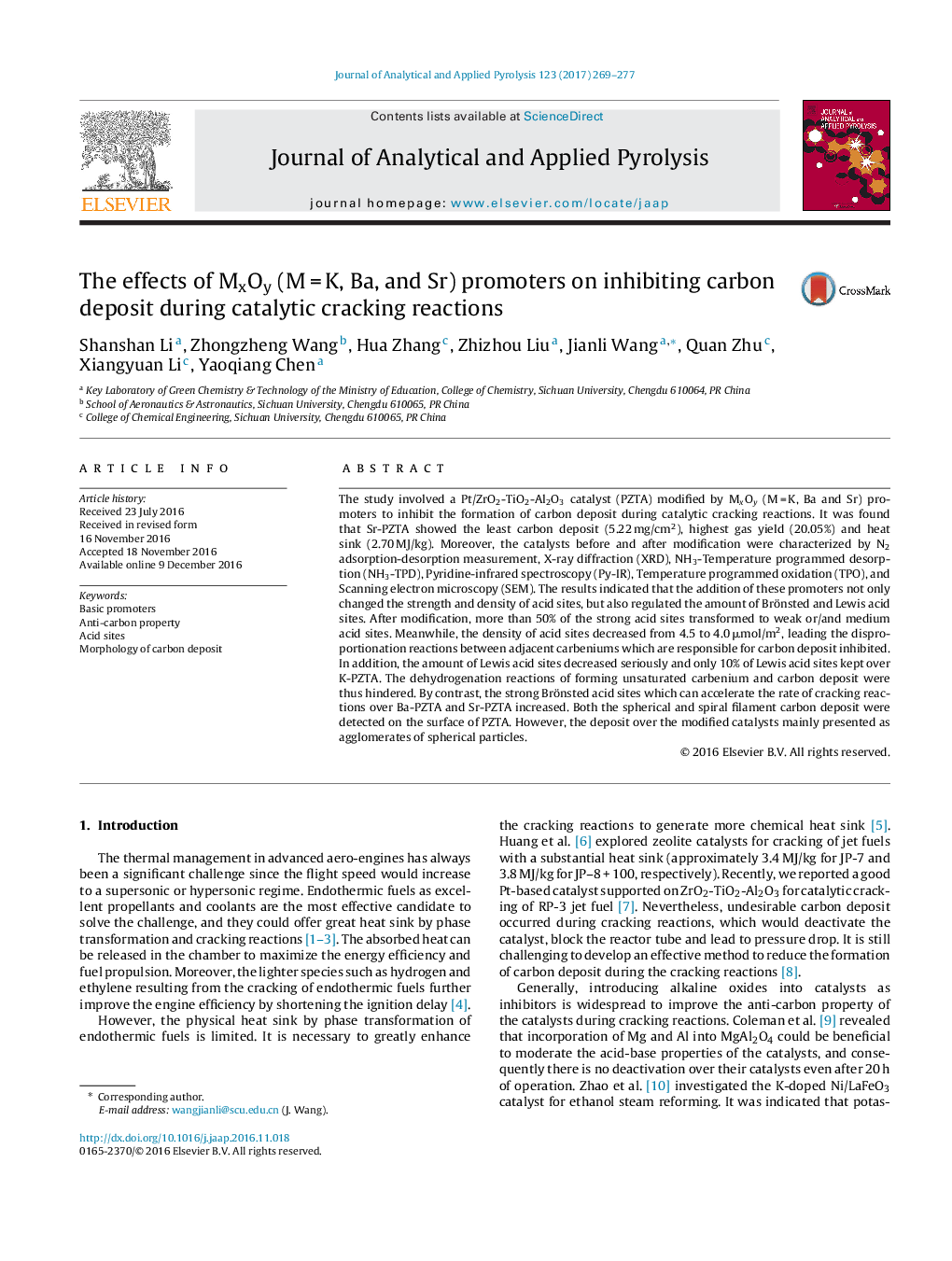| Article ID | Journal | Published Year | Pages | File Type |
|---|---|---|---|---|
| 5134546 | Journal of Analytical and Applied Pyrolysis | 2017 | 9 Pages |
â¢The introduction of promoters has a positive effect on inhibiting carbon deposit.â¢The Sr-PZTA showed the least carbon deposit and best cracking activity.â¢The performance of catalysts in inhibiting carbon deposit correlates with surface acidity closely.â¢The morphology and reactivity of carbon deposit over the catalysts are influenced by promoters.
The study involved a Pt/ZrO2-TiO2-Al2O3 catalyst (PZTA) modified by MxOy (M = K, Ba and Sr) promoters to inhibit the formation of carbon deposit during catalytic cracking reactions. It was found that Sr-PZTA showed the least carbon deposit (5.22 mg/cm2), highest gas yield (20.05%) and heat sink (2.70 MJ/kg). Moreover, the catalysts before and after modification were characterized by N2 adsorption-desorption measurement, X-ray diffraction (XRD), NH3-Temperature programmed desorption (NH3-TPD), Pyridine-infrared spectroscopy (Py-IR), Temperature programmed oxidation (TPO), and Scanning electron microscopy (SEM). The results indicated that the addition of these promoters not only changed the strength and density of acid sites, but also regulated the amount of Brönsted and Lewis acid sites. After modification, more than 50% of the strong acid sites transformed to weak or/and medium acid sites. Meanwhile, the density of acid sites decreased from 4.5 to 4.0 μmol/m2, leading the disproportionation reactions between adjacent carbeniums which are responsible for carbon deposit inhibited. In addition, the amount of Lewis acid sites decreased seriously and only 10% of Lewis acid sites kept over K-PZTA. The dehydrogenation reactions of forming unsaturated carbenium and carbon deposit were thus hindered. By contrast, the strong Brönsted acid sites which can accelerate the rate of cracking reactions over Ba-PZTA and Sr-PZTA increased. Both the spherical and spiral filament carbon deposit were detected on the surface of PZTA. However, the deposit over the modified catalysts mainly presented as agglomerates of spherical particles.
Graphical abstractDownload high-res image (104KB)Download full-size image
